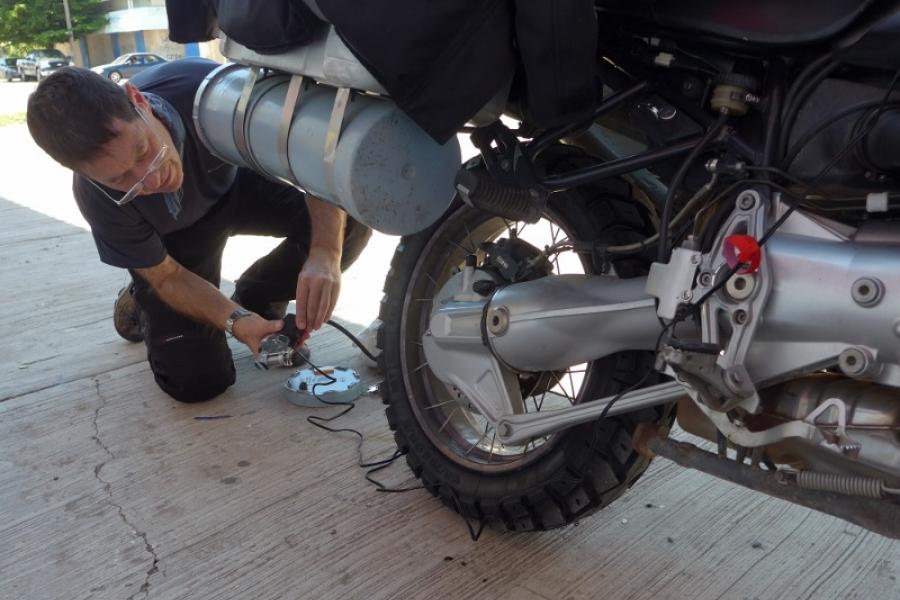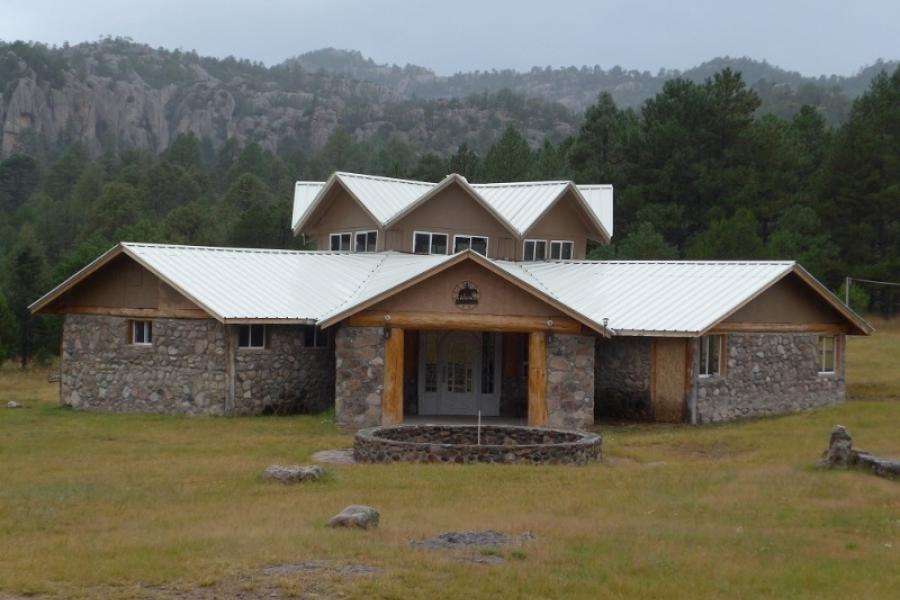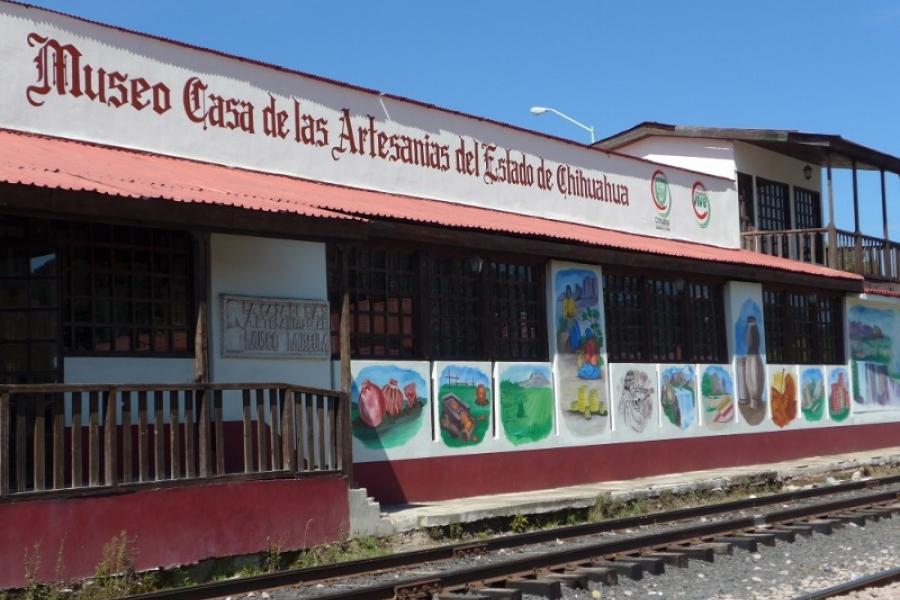A Cool Ride in the Mountains (Originally posted 12 Oct 2015)
Country
El Fuerte, where we ended last week, was founded in 1564 and was for many centuries the main commercial centre for North-West Mexico because of its proximity to the silver mines in the canyons to the north. Named after a fort built to protect settlers from indigenous attacks its main commercial purpose is long gone but its position as a stop on the famous Copper Canyon railway and recognition as one of Mexico's Pueblos Magicos has given it a new life as a minor tourist centre.
El Fuerte might not have captured our hearts but it did start us investigating the turbulent history of this area with its port at Topolobampo, modern commercial centre at Los Mochis, extensive irrigation scheme and, of course, that famous railway of dreams snaking north-east into the canyons. This was one of those areas selected for greatness by that generation of 19th Century swashbuckling entrepreneurs who were busy shaping North America. By the turn of the 20th Century, their dreams were grand.
Topolobampo is the world's second largest deepwater port and the plan was to utilise the port and make a fortune by growing sugar cane on the vast coastal plain. One might consider this to be an ambitious undertaking but the plan went further by linking the port to the North American heartland with a railway over some of the most challenging terrain. We decided to start our investigation at the beginning and rode back to Topolobampo which we had bypassed the night we arrived by ferry.
We have always found ports interesting places to visit and a room with a good view over a port is always a treat. Ports are places of constant movement; someone or something is always heading to some place exotic. But Topolobampo was nothing like that. There was no rail traffic and few trucks, no container ships berthed and the place was tired, dusty and run-down. It was, it seems, not the best place to grow sugar cane and the impossible dream of a railway bringing cattle down from Arizona was never realistic. The track took 60 years to build and required some of the most ambitious railway engineering. Today it makes a good living shipping cargo to Chihuahua and taking tourists on one of the world's greatest railway journeys. Out on the fertile, irrigated coastal plain, vast modern agribusiness grows produce, much of it for export, which is shipped north by road.
While we were entertaining ourselves with this, our friend Ernesto had organised a set of Heidenau tyres for Elephant and had them shipped to Los Mochis. All we had to do was pick them up at the DHL office and have them fitted at the motorcycle dealer two blocks away. The pick-up went well despite my lack of Spanish and the dealer welcomed us warmly and set some mechanics to work in a spotlessly clean workshop. The job was done before the long lunch break and we were charged what I can only describe as “mates' rates” for the work. All good we thought as we rode out of the workshop with a cheery wave to the staff.
Two blocks later I was pulled over to the side of the road. The bike was almost unrideable. I pulled out my tyre pressure gauge and checked the front tyre pressure. It was 9 psi. It should have been 36. I checked the back; 10 psi. It should have been 42. Clearly, the workshop's fancy electronic pressure gauge was, to be as polite as I can under the circumstances, stuffed.
I carry a small compressor on the bike so it was a few hot minutes to put enough air in front and back to get us to a service station and set the correct pressures. So much for our good start to the day. We rode north and up into the foot hills to the smart little town of Alamos where we could spend the night in some cooler air. Alamos had its beginnings as one of those mining (in this case silver) boom towns that flourish then languish when the ore runs out. In more recent times an influx of artists and cashed up foreigners have given the place a bit of makeover. Many of the grand buildings of the heyday, however, remain derelict and the place was, like many others we visit, interesting more for the stories of its heroic past than its reality today.
The next morning we packed and departed early with a very ambitious day planned. Ernesto had convinced us we should try to ride all the way to the town of Basaseachic high in the Sierra Madre to stay in a place run by a friend. We cut back to the coastal road then north along the autopista to the town of Esperanza then turned north east on the rural Mex 12. Once we were off the coastal road, the pace dropped dramatically. The road twisted and wound its way into the hills and the road surface was in terrible shape. The potholes were cavernous and the corners covered with gravel and, just to put some ginger into the day, there were many heavy trucks hauling ore and supplies from mines in the mountains. One hundred and twenty kilometres took more than three hours.
It took us 10 hours on the bike to get to Rancho San Lorenzo just east of the mining town Basaseachic and we pulled in just before dark. This is what we call a long day at the office. The rub for me, however, was the huge gold and silver mine just to the west of the town. The mine produces great wealth; a virtual river of gold and silver. Little of that, however, gets back to the local area. The roads are in terrible condition. The miners' dormitory town of Basaseachic is a dangerous shambles so poor that one acquaintance was unable to find a single dose of tetanus vaccine after cutting himself on some rusty iron.
After weeks of sweltering on the Baja and the coastal plain, we were now unpacking our cold and wet gear. We woke to teeming rain and the sort of chilly weather you get at an altitude of 2500m. Daylight also brought the next episode of our tyre drama. The pressure in the front tyre was down to 15 psi and it didn't take long to discover the reason. The dealer's mechanic had shifted the right angle valve stem on the front wheel to allow the fancy pressure gauge to fit. In doing so he had broken the seal with the rim and caused a slow leak.
The little compressor came out again and I over-inflated the front tyre to 45 psi. We then packed in the rain and started further into mountains. With the rain, twisting mountain roads and broken road surface the 120 km ride to the tourist town of Creel took nearly three hours. It would have been a wonderful ride on a fine day. When we crossed several passes over 2700m with unmelted snow still on the ground, we realised that we had left the heat behind for a while but the scenery was spectacular. We also realised that late on Friday afternoon we didn't have too much time to find a tyre solution. Jo found a good (warm) Creel hotel and stowed our gear while I got back on Elephant and started searching for a servicio numatico able to do the repair. It took three stops to ask for assistance before I found a small and apparently shambolic workshop staffed by a couple of mechanics who took more care in their work than I have seen from mechanics anywhere. They removed the wheel and tyre then refitted the valve stem with new loctite and got the whole thing back together the right way.
For this hour's endeavour I was charged the equivalent of $5. I told the boss I was very pleased with the job and gave him a generous tip with the instruction that he was to buy everyone a beer. He told me that he didn't agree with alcohol as it made the people crazy and he only drank Coke. I replied with the Spanish expression “that's right” then added but Coke is bad also, too much sugar and make the people fat (lacking the word for fat, I mimed the condition). Maybe coffee? We both laughed and shook hands and I left with a old lesson relearned. A modern dealership and a spotless workshop, or a smart office and a suit, don't guarantee professionalism and poor men too take pride in their work.






















